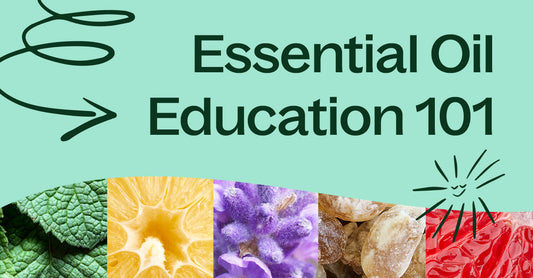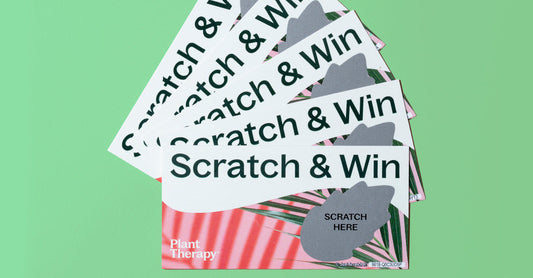So, let’s talk about stress.
Trust me, I hear you …
“Listen, sister, I can’t just leave my relationship, quit my job, and move to paradise.”
Ok, well, I actually did do all that, but my life still wasn’t stress free.
What the heck?!
While those were the right decisions for me, I didn’t change how I dealt with stress. I surgically removed some major stressors, but I didn’t remove the stress condition.
And guess what? New stressors showed up! Everyday stressors. Traffic jams. Poor customer service. Rude people. Aggressive drivers. Deadlines. And, some bigger ones. Health concerns. Financial worries. Family issues. And, I was still stressed!
The stressor is the thing that can push our buttons. The stress we experience is how our mind and body respond to it.
Let’s break this down.
There are two types of stress. Both start in the mind, and then, impact the body (remember that mind/body connection we talked about in Food for Thought Part I and II?)
Acute stress is healthy in the moment. It is a survival  mechanism designed to keep you from being dinner for dinosaurs.
mechanism designed to keep you from being dinner for dinosaurs.
Once your mind notes to self, “Holy Cow! T-Rex is looking hungry,” your brain responds by flooding your body with the hormones epinephrine (adrenaline) and cortisol to prepare you for the classic “fight or flight” state. Physiologically, your heart rate increases, your breath shallows, your muscles tense and blood moves away from your core toward your extremities.
After the crisis is averted, you are meant to return to a relaxed state often referred to as “rest and digest.”
Here is what happens when we don’t.
This is called chronic stress and it has become an epidemic condition. If we believe we are faced with more than we can handle, and this sense is unrelenting, our body remains in the “fight or flight” state to prepare for the perceived danger.
And, this constant psychological distress of the mind creates a long-term physiological stress on our body.
- Up to 90 percent of all physician office visits are for stress-related ailments and complaints.
- Stress is linked to the six leading causes of death–heart disease, cancer, lung ailments, accidents, cirrhosis of the liver, and suicide.
- Stress has been linked to serious chronic conditions such as headaches, high blood pressure, heart disease, diabetes, asthma, arthritis and skin conditions.
- More than 50 percent of ongoing emotional disorders, such as depression and anxiety, may be the result of untreated stress as the source.
That survival surge we get to ditch the dinosaurs, over the long-term, is toxic to our wellbeing.
The ongoing flow of epinephrine and cortisol continue to flood the body so much so that the body can no longer compensate and rebalance.
Researchers now know that this chronic stress cocktail not only weakens our cardiovascular system, but also our ability to regulate inflammation. And, this unregulated inflammation can take off like a rocket fanning the flames on the development and progression of disease. Additionally, our immune system becomes compromised creating another whammy to fighting off illness.
Here’s the good news.
While we can’t avoid all the stressors in our lives, we have the power to respond to them in a way that supports our wellbeing.
My mom used to tell me “take a breath and cool your jets” when I got worked up, and she was truly on to something. Remember that shallow breathing in the stress response? It turns out, if we reverse that with deep breathing we can trigger our own relaxation response. And, here’s why.
When we engage in deep, slow breathing, we stimulate the vagus nerve, which runs from the brain to the abdomen. The vagus nerve then tells the brain “all is well” and to “cool your jets.” Even the first conscious, deep breath can begin to calm our mind and body, slow our heart rate, and decrease our blood pressure.
Here’s one way to create our own portable practice. We are going to combine deep breathing and aromatherapy.
- Choose and prepare your aromatic blend
I have provided two blends below, which you may find helpful. For this exercise, I prefer using an inhaler because it promotes deep breathing and you can take it on the go.
This blend is generally soothing, balancing and calming:
- 6 drops lavender
- 6 drops sweet orange
- 3 drop roman chamomile
This blend is one of my all time favorites to support letting go of strong, turbulent emotions:
- 6 drops geranium bourbon
- 6 drops neroli
- 3 drop sweet orange
2. Now, we are going to combine our aromatic blend with deep breathing.
- Hold the inhaler under one nostril while gently holding the other one closed.
- Inhale your blend gently, deeply, and slowly down into the lungs, feeling your belly expand, to the count of 3.
- Hold a moment.
- Exhale slowly, through the mouth, to the count of 3.
- Repeat on the other side.
- Repeat on each side if desired.
3. If you choose, you can focus on relaxing words while you inhale and exhale.
- I like to inhale “Peace” and exhale “Calm.”
I hope you find this practice helpful. Remember, when you find yourself in a stressed state, inhale, exhale and repeat. Stressors are everywhere. Even in paradise. I keep an inhaler to support a deep breathing practice with me wherever I go so that I can return myself to relaxation on the run (even if T-Rex isn’t after me).
Sources:
Association, A. (2015). How Does Stress Affect Us?. Psych Central. Retrieved on April 30, 2016, from http://psychcentral.com/lib/how-does-stress-affect-us/
Association, A. (2015). How Does Stress Affect Us?. Psych Central. Retrieved on April 30, 2016, from http://psychcentral.com/lib/how-does-stress-affect-us/
WebMD, “The Effects of Stress on Your Body” webpage. Viewed 4/19/16
WebMD, “The Effects of Stress on Your Body.” Webpage. Viewed 4/19/16
“Understanding the Stress Response – Harvard Health.” Harvard Health Publications. Harvard Medical School, n.d. Web. 19 Apr. 2016.
Carnegie Mellon University. “How stress influences disease: Study reveals inflammation as the culprit.” ScienceDaily. ScienceDaily, 2 April 2012.
“Relaxation Techniques: Breath Control Helps Quell Errant Stress Response – Harvard Health.” Harvard Health Publications. Harvard Medical School, n.d. Web. 30 Apr. 2016.
“Relaxation Techniques: Breath Control Helps Quell Errant Stress Response – Harvard Health.” Harvard Health Publications. Harvard Medical School, n.d. Web. 30 Apr. 2016.
“What Happens In Vagus.” Cleveland Clinic Wellness. Cleveland Clinic, n.d. Web. 10 May 2016.











